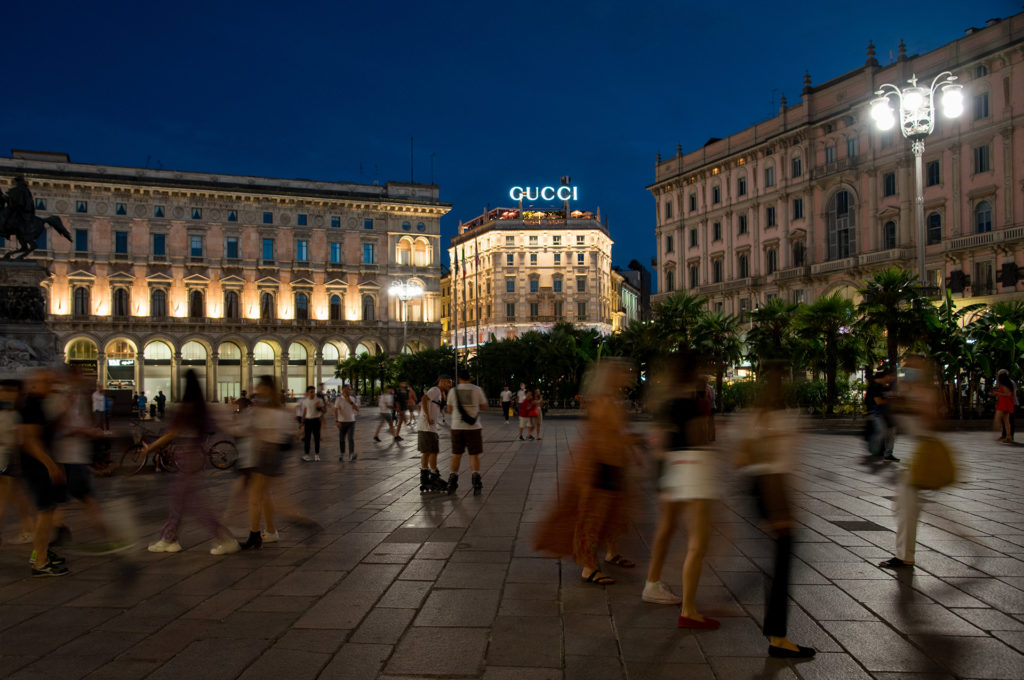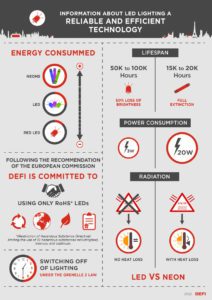ILLUMINATED ADVERTISING POLLUTES
“Illuminated advertising pollutes”. That’s what we often hear when we talk about those luminous logos that sit on top of our cities. To this sentence, we would like to answer: COMMON PRECONCEPTION!


You must think: “Another bad-faith company, of course, it pollutes.” Well, yes, of course, illuminated advertising, like all kinds of advertisings, cars, factories, electronics – and much more – pollutes. What interests us is to see how much illuminated advertising pollutes. And, we are proud to tell you that it does not pollute as much as you think. We can explain!
Illuminated advertising: a well-thought, energy-efficient technology
20 years ago, anyone would have been within their rights to be offended at how we consumed neon tube advertisings. However, since 2004, DEFI Group has replaced all the neon tubes in its devices with LED (Light Emitting Diode) lighting.
LEDs, in addition to being highly efficient in terms of luminous flux and colour quality, are also extremely reliable and effective. What does this mean in practice?


Illuminated advertising: compared to other media
Now you’re probably thinking, “OK, LEDs pollute less than neon, but they still pollute more than other ads.” Well, here again, you’ll be surprised.
Since illuminated advertising has a lifespan of at least 10 years, its impact on the environment is ultimately less important compare to a short-term device.
Let’s do a little use case
We calculated the energy impact of an illuminated advertisement of approximately 95m² (33.9m length and 3.10m height), and compared it to the energy impact of a 2m² DOOH panel (source: ADEME study).
We estimate that an illuminated advertisement, such as the above, consumes 4800kWh annually for a total of 4000h of lighting. In comparison, the ADEME states that a 2m² digital LCD advertising screen consumes 2049kWh/year for 6570h of lighting, equivalent to the average consumption of a French household. Thus for a 47 times larger device, a illuminated advertisement consumes only 2.3x more than a DOOH screen.
And if we were to compare it with online advertising, the result would be even more notable. Here we move to a larger scale but one that highlights the impact of online advertising quite well. A study indicates that its global energy consumption, in 2016, was 106TWh. That is to say 1.5 times the annual electricity consumption of the Ile-de-France region*.
Let’s summarise!
In conclusion, yes, illuminated advertising pollutes. Like many other tools and devices. However, it is a common preconception to think that it pollutes more than a DOOH screen, a digital advertisement or even our annual use of the internet.
DEFI Group chooses LED as the material for its illuminated advertising, not only for its environmental impact but also for its performance in time and light coverage.
Illuminated advertising can also become energy neutral.
Need more information about our solutions?
More articles
◀︎
▶︎